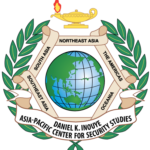Article Types
- Reports: ≤1,500 words — Brief articles on events, exercises, trips, conferences, or projects.
- Perspectives: ≤3,000 words — Editorials, commentaries, opinion pieces, or policy papers.
- Research: ≤6,000 words — Original research, analytical papers, or systematic PRISMA reviews.
Manuscript Requirements
Title Page
Include:
- Article title
- Author names, qualifications, affiliations, and positions
- Email address for the corresponding author
All submissions must be relevant to security practitioners in the Indo-Pacific.
Authorship – Only individuals who made a substantial contribution should be listed as authors.
Abstract – Required for Perspectives and Research articles only. Max 200 words. No references. Must reflect the article’s structure.
Summary – A 100–150 word summary is required for all non-research articles. This will appear on the website.
Keywords – Provide 3–5 keywords (not in the title) to help define the topic.
Formatting Guidelines
- Use only Normal style in Microsoft Word.
- Use only two levels of headings:
- Level 1: Bold
- Level 2: Bold Italic
- Use numerals throughout (e.g., “7 participants”). Do not spell out numbers, even at the beginning of sentences.
- Insert tables and figures in the desired position within the text. Each must include:
- A title (for tables) or legend (for figures)
- Clear labels, units, and defined abbreviations
- High resolution and self-explanatory content
Acknowledgements – Optional. Name only those contributors who gave permission and do not qualify for authorship.
References
- Any citation style can be used, as long as it is used consistently in your submission.
- References must appear in the text.
- Papers cited as “in press” must already be accepted.
- Do not cite “in prep” or “submitted” works.
- “Personal communication” and unpublished works may be mentioned in text only.
- Direct quotes must appear either in quotation marks or in italics — not both.
- Permission must be obtained to reuse published material. Acknowledge reused content as:
“Reproduced by kind permission of [Publisher] from [Reference]”
Writing Style Tips
- Use bullet points for simple lists
- Use tables for complex lists
- Use figures for complex concepts
- Keep language clear and sentences simple
- Avoid one-sentence paragraphs and those longer than five sentences
- Do not use contractions (e.g., write “do not” instead of “don’t”)
- Define abbreviations at first use
- Use spell check and grammar check
- Articles must meet a high standard of English. Poorly written submissions will be rejected. Have your article reviewed by a fluent English writer before submission.
Submission Checklist
Ensure the following before submitting:
- Read this guide thoroughly
- Include names, titles, affiliations, and email addresses of all authors
- Identify the corresponding author
- Specify article type
- Obtain and attach permissions for reused figures or tables
- Clearly mark quotes with quotation marks or italics
- Use consistent referencing style (author-year preferred)
- Format headings, tables, and figures according to instructions
Cover Email Requirements
Send your article to nexus@apcss.org and include:
- Proof of APCSS affiliation (e.g., course attended)
- Article title
- All author names (CC all co-authors)
- For multi-author articles, include this statement:
- “All authors contributed to the conception, design, analysis, or interpretation of this work, revised it, approved the final version, and are accountable for its content.”
- Competing interests statement:
- “The author/s have no competing interests to declare.”
- For research involving identifiable data:
- Include ethics approval or a statement that it was not required
- Duplication statement:
- “This article has not been submitted elsewhere for publication.”





